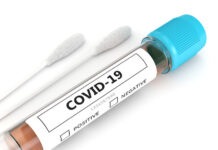Many patients with mild to moderate COPD unlikely to live longer on supplemental oxygen, according to review published in The Journal of the American Osteopathic Association
CHICAGO, Oct. 8, 2018 /PRNewswire/ — Long-term oxygen therapy does not decrease the risk for hospitalizations or increase life expectancy for many patients with mild to moderate COPD, but may lower their quality of life, according to Mayo Clinic researchers published in The Journal of the American Osteopathic Association.
For decades, physicians have prescribed long-term oxygen therapy to patients with COPD based on research demonstrating that the therapy could extend their lives. However, those studies were conducted in the 1980s and were significantly flawed, according to the study authors. They note that more recent, better designed studies did not replicate the 30-year-old results.
“Throughout medicine there are practices and treatments that continue simply because they have always been done,” says Neera Agrwal, MD, PhD, a hospitalist at Mayo Clinic and co-author on this study. “But physicians have to consider new evidence and adjust accordingly, which is one of the biggest takeaways from this study.”
While there is little evidence of long term oxygen therapy’s efficacy, it definitely comes with challenges. Primarily, it is expensive, at a cost of several hundred dollars per month. Medicare is increasingly reluctant to pay for oxygen therapy, though it spends hundreds of millions on the treatment annually, according to Dr. Agrwal. Thus, many patients pay out of pocket if their physicians recommend this therapy.
Long term oxygen therapy is defined as breathing oxygen for more than 15 hours a day, for more than 90 days. It requires patients to carry a portable oxygen concentrator at virtually all times.
The most current research indicates that patients with mild to moderate hypoxemia do not benefit from oxygen therapy except in a reduced feeling of breathlessness. However, researchers say that measure is subjective and could be a placebo effect.
Also, oxygen concentrator systems typically come in a shoulder bag, weighing about 5 pounds—not an insignificant amount of weight for someone who might be frail and easily exhausted. Dr. Agrwal adds that patients often feel embarrassed or stigmatized because of the visible nasal cannula, the plastic tube channeling oxygen to the nose, which can also cause irritation and nose bleeds.
“It is a huge shortcoming of medicine that we still cannot identify which patients will benefit from oxygen therapy,” says Dr. Agrwal. “We know some definitely do but many more are likely not getting any meaningful treatment.”
The National Institutes of Health report there are nearly 15 million cases of COPD in the U.S. The NIH also suggests there could be an equal number of undiagnosed cases, effectively doubling the COPD patient population.
Researchers say the disease is linked to aging, smoking, pollution and hazardous work environments.
About The Journal of the American Osteopathic Association
The Journal of the American Osteopathic Association (JAOA) is the official scientific publication of the American Osteopathic Association. Edited by Robert Orenstein, DO, it is the premier scholarly peer-reviewed publication of the osteopathic medical profession. The JAOA‘s mission is to advance medicine through the publication of peer-reviewed osteopathic research.
SOURCE The Journal of the American Osteopathic Association




